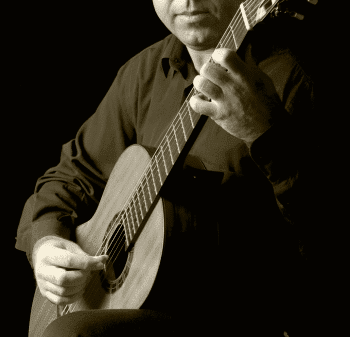How to Record Classical Guitar

One of the most difficult instruments to record is the classical guitar. It has an extensive dynamic and tonal range, and on top of that, a good performance is often full of the nuanced, detailed expression of the musician. Beethoven even reportedly once called the classical guitar a “miniature orchestra in itself.” , According to Guitarable.com
A decent classical guitar recording has to have sensitivity to capture the detailed softer notes, while simultaneously capturing the fullness of the dynamic expression without peaking. Because the strings are nylon, they are able to resonate much quieter than the steel or brass ones used on an acoustic guitar.
Multiple Inputs
Because of this, it’s best to use at least two sources when recording. Positioned in front of the guitar, 6-12 inches from the soundhole, you need either a large diaphragm condenser mic or a ribbon mic. This will capture the dynamic variance, presence and the deeper tones of the instrument’s range.
For your second input, you’ve got a few options. You can use the guitar’s internal pickup (if it has one). Or you can use one or two small diaphragm condenser “pencil” mics placed nearer to the neck. This goal of this source is to capture the brighter tones and the details of the performer’s expression.
An alternative to this set up is to use a stereo pair of LDC or SDC mics. Usually set up two to three feet apart and one to two feet straight ahead of the guitar works well. If you’re using a pair of SDCs, you also try the standard XY array.
Mixing
The goal when mixing is to capture both the warm mids and lows of the guitar while still getting the details and rich bright notes. A nice blend of the two will make the fullness of the instrument come alive. Your primary track will be your LDC or ribbon, which the direct pickup input or the pencil mics add brightness, sensitivity and color.
As when working with any recording with multiple recordings on one track, it’s important to watch out for phase cancellation.
Once you’ve got a nice blend between the the two or three recordings of your track you’ll likely want to add a little reverb to recreate the feel of the instrument’s natural resonance, unless your recording space provided enough naturally.
The classical guitar is an incredibly beautiful and expressive instrument. By following these tips for recording it, you’ll be on right track for translating that beauty to your mix.




